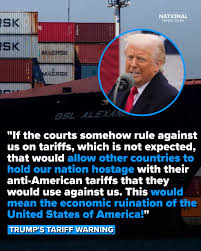
Introduction
The tariffs imposed by former President Donald Trump during his administration have significantly influenced U.S. trade policy and global economic dynamics. Initially introduced as a measure to protect American industries, these tariffs aimed to encourage domestic production and reduce the trade deficit, particularly with China. As global supply chains navigate the post-COVID economic landscape, understanding the implications of these tariffs remains crucial for policymakers, businesses, and consumers alike.
Overview of Trump Tariffs
Trump’s tariff strategy primarily focused on importing goods from China, resulting in taxes that ranged from 10% to 25% on various products, including steel, aluminum, and a wide array of consumer goods. This approach led to retaliatory tariffs from Beijing, which affected U.S. agricultural exports and raised concerns about escalating trade tensions. The tariffs were part of a broader ‘America First’ trade policy aimed at bolstering local jobs and enforcing stricter trade practices.
Current Developments
As of 2023, the legacy of Trump tariffs continues to shape U.S. economic policies. The Biden administration has maintained many of these tariffs, citing structural changes in supply chains and ongoing trade imbalances. Recent reports indicate that U.S. manufacturing has seen a boost in certain sectors due to tariff protections, but consumers are also facing higher prices as costs are passed down the supply chain. The steel and aluminum industries, in particular, have benefited, with domestic production levels rising as companies respond to increased demand.
Economic Impact
Economists are divided on the overall impact of Trump tariffs. Supporters argue they are crucial for protecting American jobs and industries, while critics suggest that tariffs lead to inflation, reduced choices for consumers, and strained relations with trading partners. A study from the Federal Reserve Bank of New York highlighted that while jobs in certain sectors have increased, jobs in affected industries such as agriculture have faced declines due to retaliatory tariffs. This complex interaction underscores the challenges of using tariffs as a tool for economic policy.
Conclusions and Future Outlook
As the U.S. grapples with inflation and changing global trade dynamics, the future of Trump tariffs remains uncertain. With ongoing discussions about trade relations with China and other countries, the approach to tariffs will likely continue to evolve. For businesses and consumers, understanding these tariffs is essential for navigating costs and planning for the economic landscape ahead. Observers predict that despite political shifts, tariffs may remain a cornerstone strategy in U.S. trade policy, affecting commerce for years to come.






